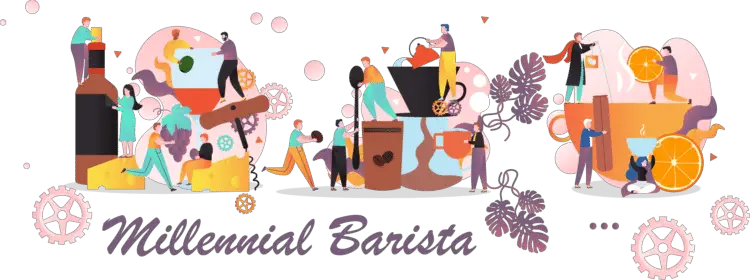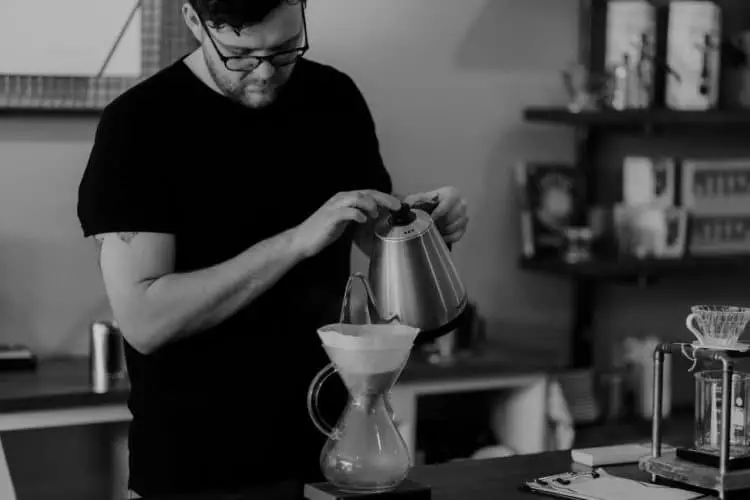When shopping for coffee filters, you might wonder if there’s a difference between brown or white coffee filters. I mean, aside from the obvious differences in color!
Is there anything else though that you should know? As a matter of fact, there is. White coffee filters provide a better flavor for your coffee. They’re bleached white by certain methods (I’ll get to that shortly). Meanwhile, brown coffee filters are eco-friendly. If you’re concerned about brewing coffee and being environmentally-friendly by lessening your impact, then brown filters are the way to go.
Believe it or not, there is still so much more to know about these two types of coffee filters. I’ve got all the details following below so keep reading to learn more about why each of them makes a difference in what you brew, how to choose the right ones, and lots of other goodies!
What you need to know about white or bleached coffee filters
When it comes to those white coffee filters, there are 2 ways they turn white via bleaching. One method is via oxygen and the other is by use of chlorine. Obviously, oxygen is the more natural way. It’s a higher quality too. Chlorine bleaching isn’t up to the same quality, but there aren’t any negative effects.
Back in the 1980s, there was a great deal of concern about chlorine-bleached coffee filters. Probably because, well, chlorine tends to be used to whiten our clothing or to keep our pools free of algae. We certainly don’t want to ingest any components of chlorine, do we? I sure don’t!
But it is safe and there is no reason you should feel afraid of it as far as your health goes, or having it affect the flavor of your coffee. There IS something you should be concerned about though. In 2012, there was a study in the Environmental Engineering and Management Journal. In the study, it mentioned that the runoff from the chlorine bleaching was a significant environmental issue for paper mills and pulp.
Oxygen bleaching is seen as better because it doesn’t need as much manufacturing and is much better for our planet. You can find out which method of bleaching is used on your coffee filters by reading the package. All of the major brands have it clearly stated for your convenience.
How are coffee filters bleached?
I will now go a little further into why bleached coffee filters pose a problem for the world. When the factories bleach them with chemicals, it’s a bad thing. Like we don’t have enough worries with the state of the environment right now. Chlorine is the biggest concern because it ranks as the second biggest pollutant among the paper industry, only coming second to the manufacturing process of pulp.
Luckily, these types of bleaching practices are going the way of the dinosaur, at least in the western world. Alternatives like oxygen and hydrogen peroxide are taking over for the bleaching process of coffee filters. In Scandinavia which produces a lot of pulp, it has passed on the chlorine style and has switched to oxygen bleaching methods.
With the big coffee filter makers like Matilda and Hario, they’re listening to what the end-users want (that’s us!) and are leading the way toward more environmentally friendly ways. You’ll see that the packaging contains a statement about oxygen bleaching which makes them a good choice.
Regardless of the brand though, if you want to use white coffee filters rather than brown ones, simply look on the packaging for “TCF”. This means that your filters have been bleached without any chlorine.
What you need to know about brown or unbleached coffee filters
Even though oxygen bleaching methods are a bit better, there is still an impact on the environment. It’s less of an impact than chlorine as are other alternative bleaching methods, however, the best way to help the world is to choose unbleached natural brown coffee filters.
You’ll recognize these on the shelves because they are brown. And while they do add waste to the environment, they require less processing than their bleached counterparts. When you see any kind of paper, if it is white, it is bleached. Paper products are naturally brown because they come from trees.
By using an unbleached coffee filter, you’ll be lessening your impact on the environment a bit. But you will likely taste a little paper when you sip your coffee. It depends on how high the quality of your chosen unbleached filters. You can get around that simply by rinsing those filters before you use them. This way, it’s the best of both worlds… tasty coffee for you and less harm done to nature!
The Impact on Taste of Bleached vs. Unbleached Coffee Filters
Some people will totally disagree, but I don’t happen to notice any discernible taste difference between either filter. However, your palate might be more discerning. That paper taste is so very slight. And you’re not likely to notice it at all on a brown filter if you pre-moisten it before.
Honestly, that’s what you SHOULD be doing when making your coffee regardless of the filter with those pour-over methods.
Also, different brands process the filters differently. It’s tempting to buy cheaper brands to save a little money. But when you use those old bleaching methods along with the low-quality pulp, it can affect the taste in a negative way. For the cleanest flavor, oxygen-bleached coffee filters will have the best taste.
If you really want to enjoy your coffee, always go with quality filters. Whether you go for bleached or unbleached, that lack of quality is what you will notice rather than the bleaching.
How to Remove the Papery Taste From Your Coffee Filters
Regardless of which style filters you choose – bleached or unbleached – you don’t want that paper flavor coming through. That’s why you should rinse them, though if you’ve never done that before, you might be wondering how you should go about this task. Not to worry… I’m going to walk you all through that so the next coffee you brew will be your best.
- Put your chosen filter in the brewing basket
- Make sure your carafe is below the basket
- Pour hot water over your filter without leaving any gaps
- Throw out that water
- For the best taste, repeat the process
- After that, feel free to brew your coffee
I want you to know that most coffee filters should be ready after one rinse. You may opt to do it again if your palate is very sensitive. Should you notice a papery taste even after performing a second rinse, I recommend you shop for a different brand of filters. It’s likely after going to all that trouble that the issue has to do with the quality of pulp used.
Types of Coffee Filters
Now I’m going to cover the different types of coffee filters out there. You might be aware of the basics. Like if you have a basket, you know you shouldn’t use a cone. But here are more details about each kind!
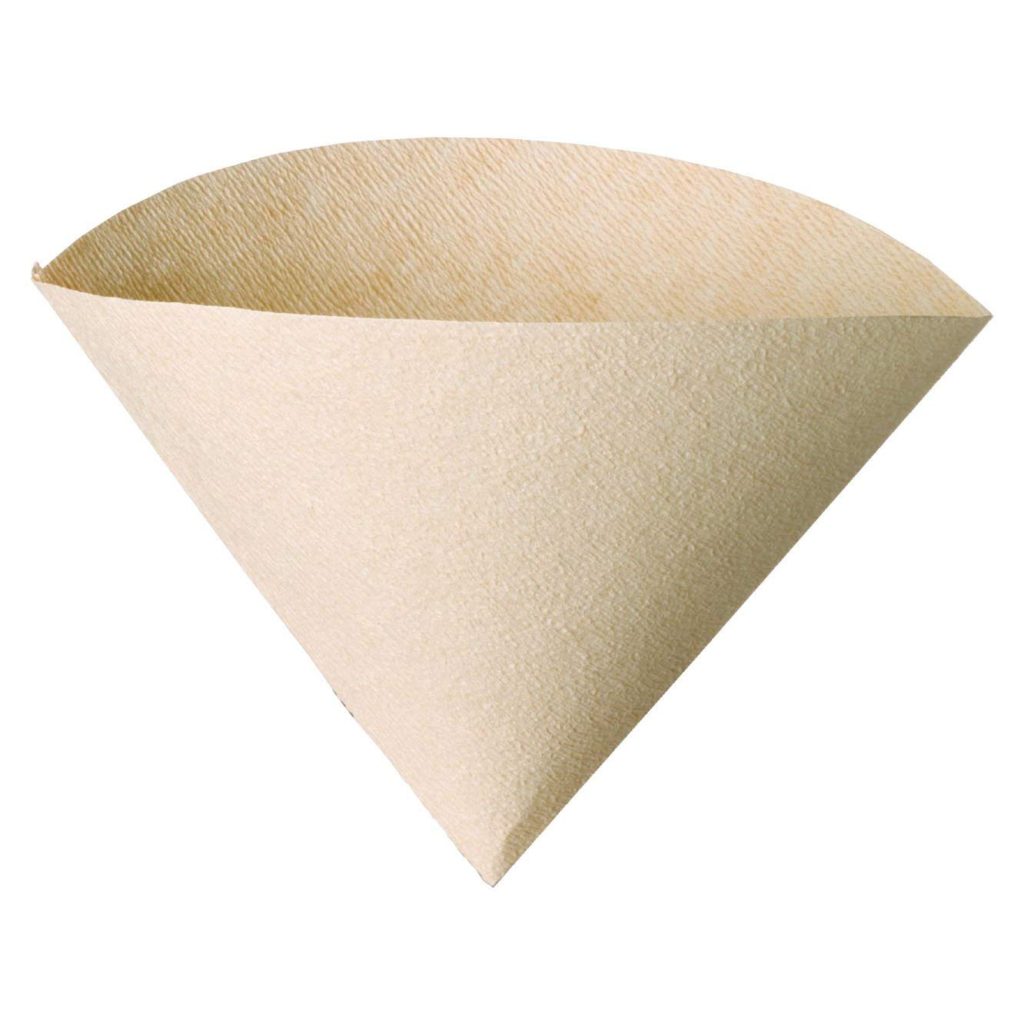
– The cone-shaped filter
Cones are usually associated with Hario V60 (Amazon link), though Kono has made similar ones for a long time too. Cone-drippers are becoming more popular now and you’ll find many brands. You can choose Hario, though Kona, Abaca, and Mola filters tend to be better. The reason Hario fell from grace is that they increased a huge demand so they started to use filters from the Netherlands in more recent years. That difference was very discernible over the original ones from Japan. The composition changed and thus, they drain more slowly.
How do you know if you have the new ones or the old ones? New Hario filters have a tab. Also, the originals from Japan have an ‘FSC’ logo on them.
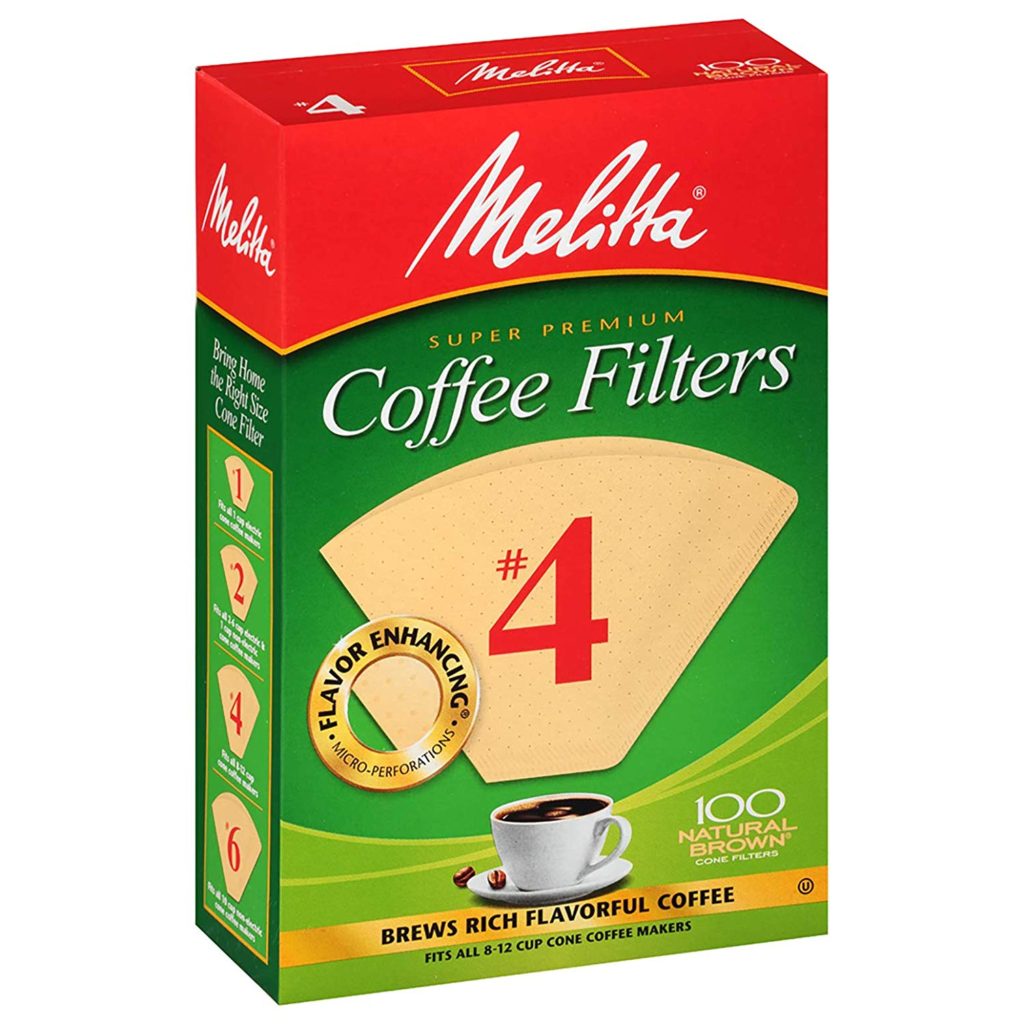
– The classic shape
Melitta, a German company, invented this shape over 100 years ago. These are the easiest style to find in the supermarket. Unfortunately, because it’s the most widespread style, it’s also easier to buy poor quality without realizing it. Melitta (Amazon link) is a great brand with a penchant for quality, though coffee snobs will tell you ones made in Japan are better.
Others say Melitta rules, and quite literally so. They’ve conveniently marked on the filters the amount of coffee you need so measuring the perfect amount requires zero thought. That’s good news when you’re groggy in the morning. The natural brown filters are also composed with a patented style that the company says enhances the flavor via micro-perforations. This allows it to give you the most flavor, and the bottom is double-crimped to keep it from breaking and leaving grounds in your pot.
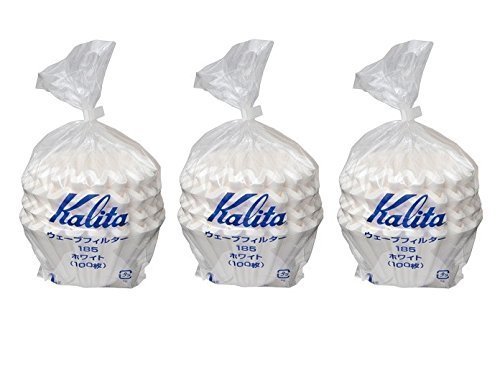
– The wave-shaped coffee filter
Kalita (Amazon link), a Japanese brand, is known for making what people call a wave-shaped flat-bottomed filter. There are 2 different sizes and both are highly regarded for producing quality and delightful flavors. Kalita has some competition through Blue Bottle Coffee which just made a coffee dripper of its own with Japanese-produced filters that have the same shape.
The kind of filters you choose has to do with your coffee machine. If you just bought a new one, you should make sure to get the right size to fit your machine. Once you locate the correct size, then it comes down to choosing the best quality of filters to brew with.
Can you reuse your coffee filters?
Most people don’t know this fun fact, but you can reuse your coffee filters! They’re good for use about 4 or 5 times max before they lose effectiveness. You’ll need to dispose of the coffee grounds you used before reusing it though. The best way to do this is to dump them out, then rinse the filter and allow it to dry before you use it again. You’ll wind up buying fewer filters and getting the most bang for your buck!
The impact of reusing coffee filters on the flavor
If you truly love coffee, you never want to reuse those coffee grounds unless there is some horrid emergency that is preventing you from buying more coffee beans. Like a snowstorm, flood, hurricane… you get the idea. You lose so much flavor in reusing those grounds to brew another pot. I’ve talked about brewing with the same coffee grounds more than once in this post.
So, reusing the filter itself is fine if you follow the steps I mentioned above. But reusing those grounds? Oh, just don’t. You might not notice the difference if you add lots of cream and sugar. And you might not notice if you top off a pot that was just brewed, but if you wait a day (or more!) you’ll be rather unhappy with the quality of the coffee.
There’s more too, like fungus and mold that can quickly grow on your used coffee grounds. I go into more details on that in my other post so be sure to check it out!
The Alternative Use of Coffee Filters
With used coffee grounds, you can make better use of them than brewing them up again without throwing them away. They make for a great skin exfoliator and can be used as a natural abrasive for scrubbing dishes. If you do either of these though, do make sure you put something over the drain to catch the grounds. They can get clogged up inside your pipes!
Used coffee grounds also make a great compost since worms adore it too!
If you do decide to use your coffee grounds again, as long as it’s the same day, you will live. I don’t recommend using them after they’ve been sitting in the basket for longer than that though, especially if you live in a hot and humid climate. Bacteria, mold, and fungus all thrive in those conditions and you could wind up in the bathroom for a while.
When it comes to reusing your coffee filters though, you’re in luck! There are many things you can do with them!
- Make art! Used coffee filters have a naturally aged look that makes them look really cool in arts and crafts. You can make an eco-collage, lampshades, paper flowers, and so much more. Indulge your crafty side and you might just be surprised!
- Stop leaky plants! Tired of the mess your plants leave behind? You can line your pots and planters with a used coffee filter. This keeps the soil from falling out of the little holes while still allowing enough aeration for the plant roots to keep your greenery thriving.
- Get seeds ready to sprout! Yes, you can even use those used coffee filters to get your plant seeds to sprout. Once they do, you can move them to the soil when you see the roots showing.
- Keep shoes from stinking to high heaven! If you regularly have stinky shoes or it’s a one-off occasion, take your used coffee filter and pour baking soda in it. Tie it into a handy bundle and stuff it into the toes of the offending shoes to be rid of bad smells.
- Set down your cooking utensils without creating a mess! If you don’t have a spoon rest in your kitchen, a coffee filter definitely works in a pinch to minimize messes while you’re cooking.
- Sew better! For those that sew, paper backings are often required. You can use a coffee filter as the backing instead. You should rinse and dry it first though for it could stain your fabric, unless you want a coffee-enhanced look.
- Decorate your table! Want to have the ultimate boho-chic look for your dinner party? Wash your used coffee filters and lay them flat to dry. It creates a really cool vintage look that will look amazing set upon plates for holidays and special meals.
- Collect kitchen grease! You hopefully know you should never pour kitchen grease down the drain. If not, now you do! You can strain that grease by using a coffee filter on the top of a mason jar. Wait until the grease has cooled first and keep the filter a little loose down the center or you’ll wind up with grease oozing down the sides.
- Microwave splatter protection! Cover your food with an old coffee filter before microwaving. Instead of using plastic that could emit chemicals, you’ll be using something safe and keeping messes from getting all over the inside of the microwave.
- Buffer things in stacks! With your cleaned and dried coffee filters, you can insert them between each dish when stacking. Whether it’s your finest china or your daily dinner set, it keeps scratches and chipping from happening.
- Protect precious ornaments! During the holidays, there comes that sad time when you must pack it all up. Using clean, dried coffee filters can help you protect your favorite ornaments, so they’ll be damage-free when the holidays come back around.
Conclusion
Now that there are alternative methods of bleaching coffee filters that do less damage, you don’t have to worry about your health or the environment. If you’re looking to minimize your impact, choose unbleached. And regardless of your choice, rinse them before every use to get the best coffee flavor.
Spend a little more for quality rather than just choosing the cheapest brand. You’ll get better coffee this way. Plus, you can always reuse those used coffee filters for so many different things so it’s a worthy investment!
